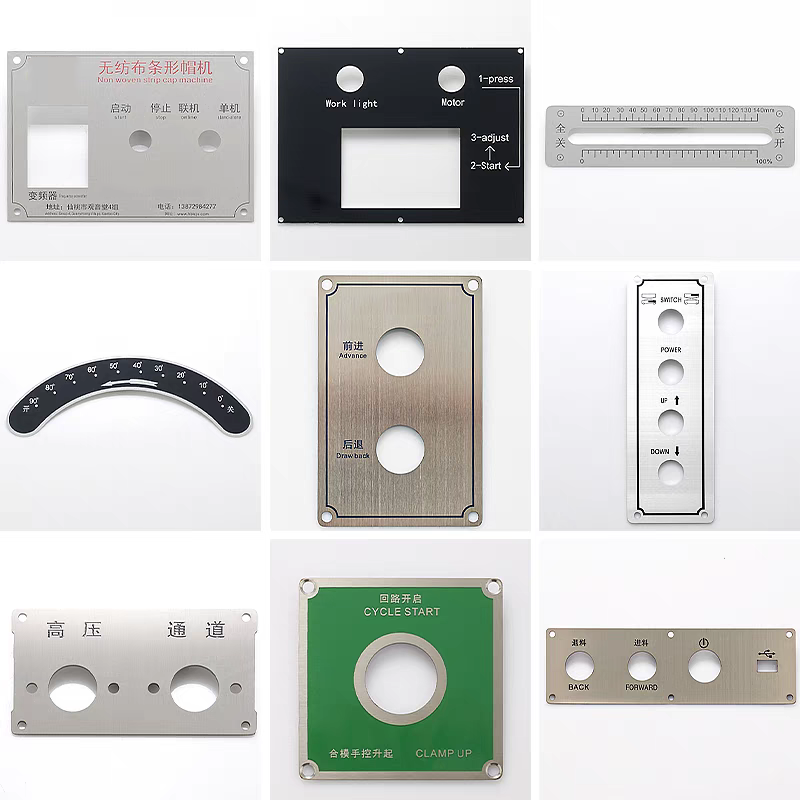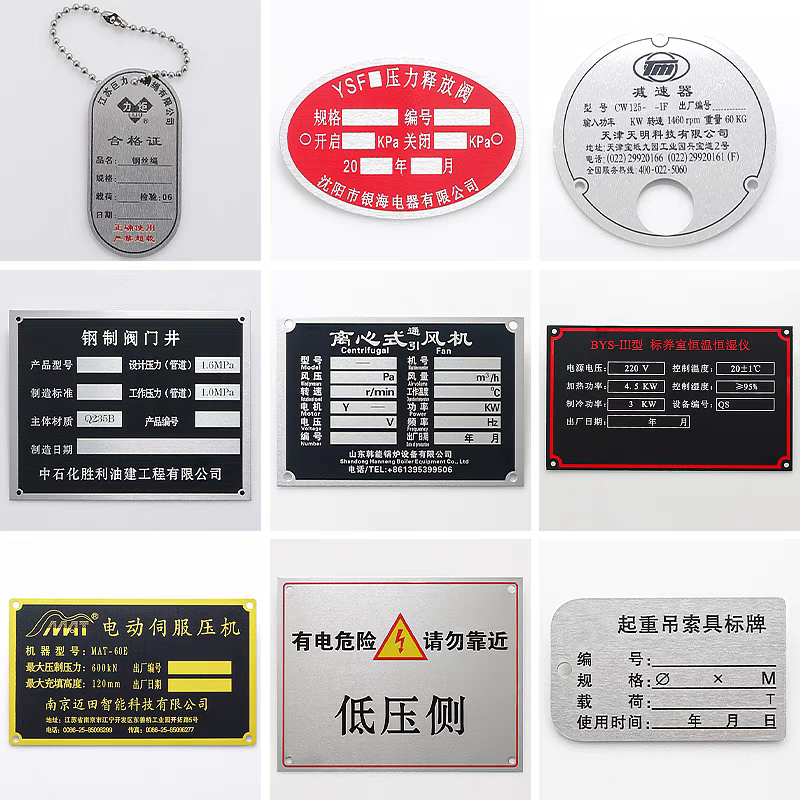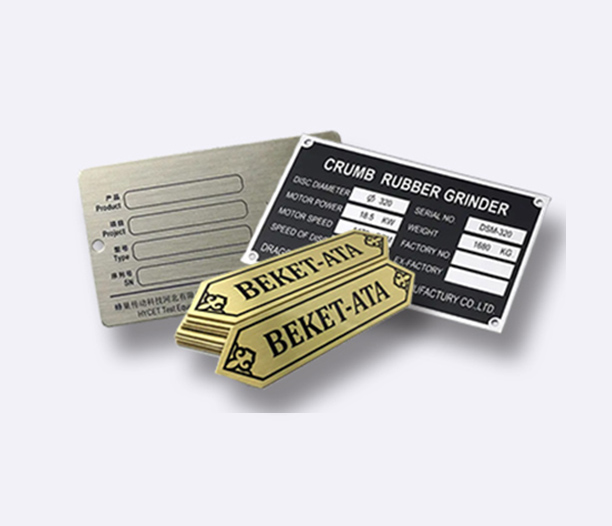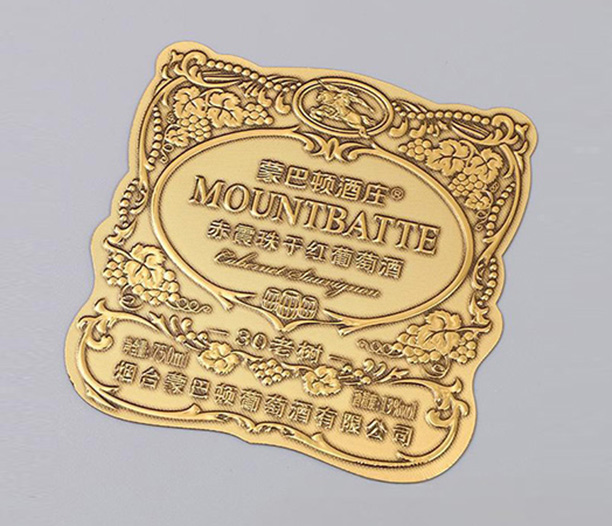When you think of reliable identification methods, what comes to mind? In countless scenarios, from military operations to everyday pet care, brass identification tags have proven to be indispensable tools. These small, durable markers carry critical information, ensuring safety, organization, and accountability. But what makes brass identification tags so widely trusted? How have they evolved over time, and why are they preferred in various industries? This article delves into the multifaceted world of brass identification tags, offering a detailed look at their history, properties, applications, manufacturing, and benefits. Whether you're considering them for personal use or professional purposes, understanding these tags can help you make informed decisions. Let's explore why brass identification tags remain a top choice for identification needs.

What Are Brass Identification Tags?
Brass identification tags are small plates or labels made from brass, a metal alloy primarily composed of copper and zinc. These tags are typically engraved or stamped with essential information such as names, serial numbers, dates, or other identifying details. Designed for durability and longevity, brass identification tags serve as permanent markers in various settings. They are commonly used in military contexts as dog tags, in industrial environments for asset tracking, and even in personal applications like pet identification. The material's inherent properties make brass identification tags resistant to corrosion and wear, ensuring that the information remains legible over time. Unlike plastic or other metals, brass offers a unique combination of malleability and strength, allowing for precise customization while withstanding harsh conditions. This versatility has cemented the role of brass identification tags across multiple domains.
The Historical Significance of Brass Identification Tags
The use of brass identification tags dates back centuries, with roots in military and industrial history. Initially, soldiers in ancient civilizations used rudimentary tags made from materials like wood or lead for identification purposes. However, the adoption of brass gained momentum during the 19th and 20th centuries, particularly in military conflicts. For instance, during World War I, brass identification tags became standard issue for soldiers, providing a reliable means to identify casualties and manage records. The evolution continued with improvements in engraving techniques and material composition, enhancing their durability and readability. Over time, brass identification tags expanded beyond the military into civilian life, including use in factories for equipment labeling and in households for pet identification. This historical journey underscores the enduring relevance of brass identification tags, adapting to changing needs while maintaining their core purpose of providing clear and lasting identification.
Key Properties of Brass for Identification Tags
Brass is chosen for identification tags due to its exceptional material properties, which contribute to the tags' effectiveness and longevity. Firstly, brass exhibits excellent corrosion resistance, thanks to the protective layer that forms when exposed to air. This makes brass identification tags suitable for outdoor or humid environments, where other materials might deteriorate. Secondly, brass is highly malleable, allowing it to be easily stamped, engraved, or shaped without cracking. This facilitates the creation of detailed, custom designs on brass identification tags, ensuring that information is clear and precise. Additionally, brass has a distinctive gold-like appearance that remains attractive over time, adding an aesthetic appeal to practical uses. The alloy's durability means that brass identification tags can withstand physical impact, temperature variations, and chemical exposure, making them a cost-effective choice in the long run. These properties collectively explain why brass identification tags are favored for demanding applications.

Common Applications of Brass Identification Tags
Brass identification tags are utilized in a wide array of fields, demonstrating their versatility and reliability. In the military, they are famously known as dog tags, worn by personnel to provide essential identification in combat or emergency situations. Each tag typically includes the soldier's name, blood type, and serial number, ensuring quick and accurate data access. In industrial settings, brass identification tags are used for asset management, labeling machinery, tools, and electrical components to track maintenance and prevent loss. The pet industry also relies on brass identification tags attached to collars, displaying the animal's name and owner's contact information to aid in recovery if lost. Furthermore, these tags find applications in marine environments, such as on boats or diving equipment, where corrosion resistance is crucial. Even in historical preservation, brass identification tags mark artifacts or structures, providing lasting documentation. This broad usage highlights how brass identification tags address diverse identification needs effectively.
The Manufacturing Process of Brass Identification Tags
The production of brass identification tags involves several precise steps to ensure quality and functionality. It begins with the selection of high-quality brass sheets, which are cut into standard sizes using laser cutting or stamping machines. Next, the tags undergo surface treatment, such as polishing or coating, to enhance their appearance and corrosion resistance. Engraving or stamping follows, where information is permanently etched onto the surface using computerized tools or manual methods for custom designs. This step is critical for the readability and durability of brass identification tags. After engraving, the tags may be treated with protective finishes, like lacquer or anti-tarnish coatings, to prolong their lifespan. Finally, quality checks are performed to verify accuracy and durability before packaging. This streamlined process ensures that each brass identification tag meets industry standards, providing a reliable product for various uses. Understanding this manufacturing journey can help users appreciate the craftsmanship behind brass identification tags.
Benefits of Using Brass Identification Tags
Opting for brass identification tags offers numerous advantages that make them a superior choice in many scenarios. One key benefit is their longevity; brass identification tags can last for decades without significant wear, reducing the need for frequent replacements. This durability translates to cost savings over time, especially in industrial or outdoor applications. Additionally, the material's resistance to rust and corrosion ensures that the information remains intact, even in challenging environments like marine or chemical plants. Brass identification tags are also highly customizable, allowing for intricate engravings, logos, or barcodes to meet specific requirements. Their non-magnetic nature is another plus, making them suitable for use in electronic or sensitive equipment where interference must be avoided. From a safety perspective, brass identification tags provide reliable identification in emergencies, such as in military or medical contexts. Overall, these benefits underscore why brass identification tags are a trusted solution for accurate and lasting identification.
How to Choose the Right Brass Identification Tags
Selecting the appropriate brass identification tags depends on several factors to match your specific needs. First, consider the application—whether for personal, military, industrial, or pet use—as this influences the tag's size, thickness, and engraving depth. For instance, thicker brass identification tags are better for heavy-duty environments, while thinner ones suffice for lightweight applications. Next, evaluate the customization options, such as the type of engraving (e.g., laser vs. stamping) and the inclusion of additional features like holes for attachment or color coatings. It's also essential to assess the environmental conditions the tags will face; for outdoor or corrosive settings, opt for brass identification tags with enhanced protective finishes. Budget is another consideration; while brass identification tags may have a higher upfront cost than alternatives, their durability often justifies the investment. Lastly, source from reputable suppliers to ensure quality and compliance with standards. By carefully weighing these aspects, you can choose brass identification tags that deliver optimal performance and value.
Brass identification tags have stood the test of time as reliable, versatile, and durable identification solutions. From their historical roots in military use to modern applications in industry and daily life, these tags offer unmatched benefits due to brass's unique properties. Understanding their history, manufacturing, and diverse uses can help you appreciate why brass identification tags remain a preferred choice. Whether for ensuring safety, tracking assets, or providing peace of mind, investing in brass identification tags is a smart decision that pays off in the long run. As technology advances, the core principles of durability and clarity embodied by brass identification tags will continue to make them relevant in an ever-changing world.
Frequently Asked Questions About Brass Identification Tags
Q1: What are the primary uses of brass identification tags?
A1: Brass identification tags are primarily used for identification and tracking purposes in various fields. Common applications include military dog tags for soldier identification, industrial asset labeling for machinery and equipment, pet tags for animal identification, and marine uses due to their corrosion resistance. They ensure critical information remains accessible and legible over time.
Q2: How durable are brass identification tags in outdoor conditions?
A2: Brass identification tags are highly durable in outdoor conditions because brass naturally resists corrosion and tarnishing. When treated with protective coatings, they can withstand exposure to moisture, UV rays, and temperature fluctuations without significant degradation, making them ideal for long-term use in harsh environments.
Q3: Can brass identification tags be customized with specific designs or text?
A3: Yes, brass identification tags can be easily customized with specific text, logos, serial numbers, or barcodes using engraving or stamping techniques. This flexibility allows users to tailor the tags to their exact needs, whether for personal identification, branding, or functional tracking in professional settings.
Q4: Are there any maintenance requirements for brass identification tags?
A4: Brass identification tags require minimal maintenance. Occasional cleaning with a soft cloth and mild soap can help maintain their appearance, but their corrosion-resistant properties mean they often do not need frequent upkeep. Avoiding abrasive cleaners will preserve the engraving and finish over time.
Q5: What makes brass a better choice than other metals for identification tags?
A5: Brass is often preferred over other metals due to its excellent balance of malleability, corrosion resistance, and durability. Unlike steel, it is non-magnetic and less prone to rust, and compared to aluminum, it offers a more substantial feel and better engraving clarity. These characteristics make brass identification tags reliable and cost-effective for diverse applications.






